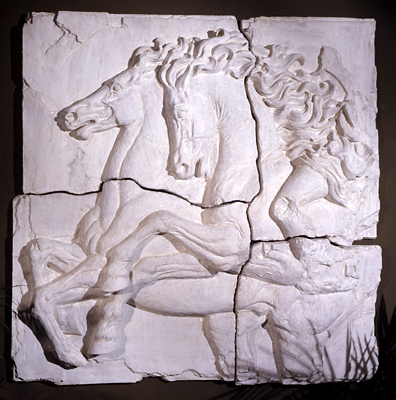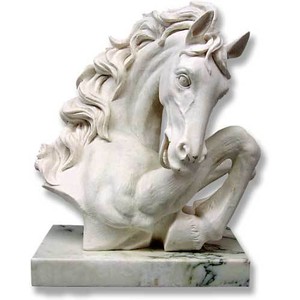The Balanced Seat II

10.14.2011 TME
10.21.11 TME
return to
Educated Equestrian
return to
Educated Equestrian

"The horseman will give all the possible extension to the chest in such a manner that each part rests on that of its lower part. Loins sustained without stiffness. Equally receding shoulders. The head straight, comfortable and released from the shoulders. Arm falling without force. Thighs and legs will have to find by their innermost force as many points of contact as is possible with the saddle and flanks of the horse." Francois Baucher on the seat
"Omit therefore demanding forced positions, as it is necessary to leave the pupil to seek his balance himself and from that by fixing the points of support, render his position natural and this advanced until by this principle he loses the fear of falling. When the pupil has acquired the confidence and the solidity, it is for the master to judge if the art is necessary to establish the position." D'Aure
“The more deeply the rider sits, the better his posture will be, the torso raised and relaxed, legs hanging well down and adhering softly to the horse without gripping." Nuno Oliveira
When the masters wrote of horsemanship, they did not write exclusively on training principles and methodology. They included considerations of principles of psychology, anatomy, physics, and spirituality. They considered the mind, body, and spirit, and the relationships between the horse, rider, and earth below. A holistic understanding of equitation has been the goal of masters throughout various cultures, throughout time.
The challenge to describe a functional seat has been answered by numerous horsemen in their own words, but essentially, they attempt to address how a rider can go about finding her own center of gravity, the horse’s center of gravity, and harmoniously connect the two and direct that into alignment with the earth’s gravitational force. This is no small feat, considering not one of these entities is static. Each has its own flow, its own rhythm, its own pattern of movement. Gravity, thankfully, is a predictable constant. The horse can be a wild card. Green horses are infamously unpredictable. Often (but not necessarily) the green horse is also a young horse, who is growing in fits and spurts. He’s still working on resolving his own balance. The addition of an unbalanced rider can be extremely disturbing to him. Add to that a lack of confidence in and exposure to humans and their expectations, and the elements for a physically reactive and erratic horse have been united.
The addition of a balanced rider can be slightly less upsetting. The rider, through practice, can make his own mechanism precise, and learn to control his own movements to agree with the horse. Educated riders are consciously aware of their points of support, whether they are fixed or not, and how to go about fixing their seat when they fall out of balance. They are aware of how well their vertebrate is stacked, and when they fall out of agreement with gravity, know how to go about reconciling it. They know how important it is, when giving indications to the horse, for the rest of their body to remain still, relaxed, and in agreement with the horse’s movements. They understand their line of sight determines the direction of movement of the horse/rider unit, and how the openness of their chest cavity allows for maximum efficiency of their respiratory system. The educated rider understands the holistic effect on both themselves and the horse managing and controlling their own body has on performance.
"Omit therefore demanding forced positions, as it is necessary to leave the pupil to seek his balance himself and from that by fixing the points of support, render his position natural and this advanced until by this principle he loses the fear of falling. When the pupil has acquired the confidence and the solidity, it is for the master to judge if the art is necessary to establish the position." D'Aure
“The more deeply the rider sits, the better his posture will be, the torso raised and relaxed, legs hanging well down and adhering softly to the horse without gripping." Nuno Oliveira
When the masters wrote of horsemanship, they did not write exclusively on training principles and methodology. They included considerations of principles of psychology, anatomy, physics, and spirituality. They considered the mind, body, and spirit, and the relationships between the horse, rider, and earth below. A holistic understanding of equitation has been the goal of masters throughout various cultures, throughout time.
The challenge to describe a functional seat has been answered by numerous horsemen in their own words, but essentially, they attempt to address how a rider can go about finding her own center of gravity, the horse’s center of gravity, and harmoniously connect the two and direct that into alignment with the earth’s gravitational force. This is no small feat, considering not one of these entities is static. Each has its own flow, its own rhythm, its own pattern of movement. Gravity, thankfully, is a predictable constant. The horse can be a wild card. Green horses are infamously unpredictable. Often (but not necessarily) the green horse is also a young horse, who is growing in fits and spurts. He’s still working on resolving his own balance. The addition of an unbalanced rider can be extremely disturbing to him. Add to that a lack of confidence in and exposure to humans and their expectations, and the elements for a physically reactive and erratic horse have been united.
The addition of a balanced rider can be slightly less upsetting. The rider, through practice, can make his own mechanism precise, and learn to control his own movements to agree with the horse. Educated riders are consciously aware of their points of support, whether they are fixed or not, and how to go about fixing their seat when they fall out of balance. They are aware of how well their vertebrate is stacked, and when they fall out of agreement with gravity, know how to go about reconciling it. They know how important it is, when giving indications to the horse, for the rest of their body to remain still, relaxed, and in agreement with the horse’s movements. They understand their line of sight determines the direction of movement of the horse/rider unit, and how the openness of their chest cavity allows for maximum efficiency of their respiratory system. The educated rider understands the holistic effect on both themselves and the horse managing and controlling their own body has on performance.
“Indeed a good seat, which renders the horseman less constricting, allows a better output of the whole man-horse ensemble in competitions, dressage, jumping, polo, cross-country and steeplechase. But in addition, in the simpler uses of the horse and without pretensions, such as hunting or trail riding, a good seat allows greater appreciation and joy, and thus greatly increasing the pleasure which one may have in simple rides, by appearing to the horse as a more tolerable and agreeable companion." Licart
It is commonly argued that a considerate rider should manage the amount of weight they ask their horse to carry. Other riders might focus on their own suppleness, flexibility, and consider that to be the most important contribution they can make to the performance of the horse/rider unit. An educated rider understands it is not the amount of weight he is asked to carry, or the rider’s ability to bend, the horse is foremost concerned about. It is how well that additional weight is balanced, how stable the rider is, which can serve to either agitate, or relieve, a horse’s worries.